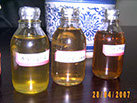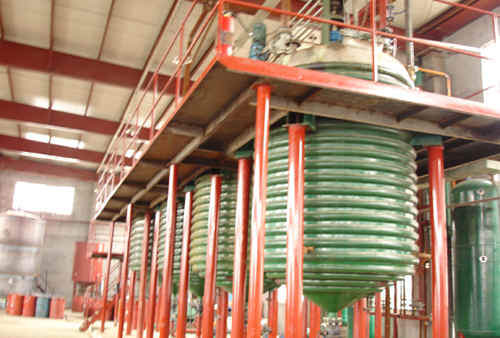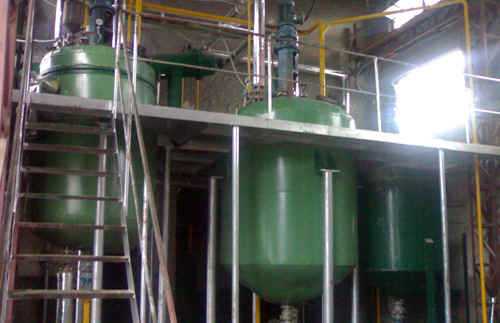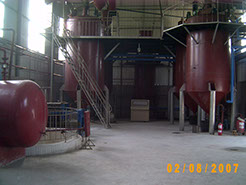
BIOENERGY
BIO diesel
WHAT IS BIO DIESEL?
Biodiesel is the name of a clean burning alternative fuel, produced from domestic, renewable resources. Biodiesel contains no petroleum, but it can be blended at any level with petroleum diesel to create a biodiesel blend. It can be used in compression-ignition (diesel) engines with little or no modifications. Biodiesel is simple to use, biodegradable, nontoxic, and essentially free of sulfur and aromatics.


Chem-Energy Corporation started its venture in Bio Diesel in 2003. The company has managed, developed and installed Bio Diesel plants and at present developing two Bio Diesel Plants in China and California using various technologies with future possibilities in Pakistan and Angola. Chem-Energy can also develop, and install Bio Diesel plants for the private parties on turn key basis using various raw materials. Chem-Energy can also built the Bio Diesel plants using Solar and Tire Technology.



CULTIVATION OF THE RAW MATERIALS PLANTS
Bio Diesel can be manufactured from various sources. Jatropha Carcass has been considered to be one of the best crop as a source for Bio Diesel.

“Jatropha Curcas is acclaimed as a promising bio-fuel crop ideal to convert today's unproductive lands into tomorrow's green oil fields".
THE PLANT - PROFILE
Introduction
Jatropha curcus is a drought-resistant perennial, growing well in marginal/poor soil. It is easy to establish, grows relatively quickly and lives, producing seeds for 50 years.
Jatropha the wonder plant produces seeds with an oil content of 37%. The oil can be combusted as fuel without being refined. It burns with clear smoke-free flame, tested successfully as fuel for simple diesel engine. The by-products are press cake a good organic fertilizer, oil contains also insecticide.
It is found to be growing in many parts of the country, rugged in nature and can survive with minimum inputs and easy to propagate.
Medically it is used for diseases like cancer, piles, snakebite, paralysis, dropsy etc.
Jatropha grows wild in many areas of India and even thrives on infertile soil. A good crop can be obtained with little effort. Depending on soil quality and rainfall, oil can be extracted from the Jatropha nuts after two to five years. The annual nut yield ranges from 0.5 to 12 tons. The kernels consist of oil to about 60 percent; this can be transformed into biodiesel fuel through Estrification.
Family: Euphorbiaceae Synonyms: Curcas purgans Medic. Vernacular/common names: English- physic nut, purging nut; Hindi - Ratanjyot Jangli erandi; Malayalam - Katamanak; Tamil - Kattamanakku; Telugu - Pepalam; Kannada - Kadaharalu; Gujarathi - Jepal; Sanskrit - Kanana randa.
Distribution and Habitat
It is still uncertain where the centre of origin is, but it is believed to be Mexico and Central America. It has been introduced to Africa and Asia and is now culti-vated world-wide. This highly drought-resistant spe-cies is adapted to arid and semi-arid conditions. The current distribution shows that introduction has been most successful in the drier regions of the tropics with annual rainfall of 300-1000 mm. It occurs mainly at lower altitudes (0-500 m) in areas with average an-nual temperatures well above 20°C but can grow at higher altitudes and tolerates slight frost. It grows on well-drained soils with good aeration and is well adapted to marginal soils with low nutrient content.
Botanical Features
It is a small tree or shrub with smooth gray bark, which exudes a whitish colored, watery, latex when cut. Normally, it grows between three and five meters in height, but can attain a height of up to eight or ten meters under favourable conditions.

Flowers
Fruits
Seeds
The petiole length ranges between 6-23 mm. The inflorescence is formed in the leaf axil. Flowers are formed terminally, individually, with female flowers usually slightly larger and occurs in the hot seasons. In conditions where continuous growth occurs, an unbalance of pistillate or staminate flower production results in a higher number of female flowers.
Fruits are produced in winter when the shrub is leafless, or it may produce several crops during the year if soil moisture is good and temperatures are sufficiently high. Each inflorescence yields a bunch of approximately 10 or more ovoid fruits. A three, bi-valved cocci is formed after the seeds mature and the fleshy exocarp dries
The seeds become mature when the capsule changes from green to yellow, after two to four months.
Flowering and Fruiting Habit
The trees are deciduous, shedding the leaves in the dry season. Flowering occurs during the wet season and two flowering peaks are often seen. In permanently hu-mid regions, flowering occurs throughout the year. The seeds mature about three months after flowering. Early growth is fast and with good rainfall conditions nursery plants may bear fruits after the first rainy season, direct sown plants after the second rainy season. The flowers are pollinated by insects especially honey bees.



Ecological Requirement
The trees are deciduous, shedding the leaves in the dry season. Flowering occurs during the wet season and two flowering Jatropha curcas grows almost anywhere , even on gravelly, sandy and saline soils. It can thrive on the poorest stony soil. It can grow even in the crevices of rocks. The leaves shed during the winter months form mulch around the base of the plant. The organic matter from shed leaves enhance earth-worm activity in the soil around the root-zone of the plants, which improves the fertility of the soil.
Regarding climate, Jatropha curcas is found in the tropics and subtropics and likes heat, although it does well even in lower temperatures and can withstand a light frost. Its water requirement is extremely low and it can stand long periods of drought by shedding most of its leaves to reduce transpiration loss. Jatropha is also suitable for preventing soil erosion and shifting of sand dunes.
Biophysical Limits
Altitude: 0-500 m, Mean annual temperature: 20-28 deg. C, Mean annual rainfall: 300-1000 mm or more.
Soil type: Grows on well-drained soils with good aeration and is well adapted to marginal soils with low nutrient content. On heavy soils, root formation is reduced. Jatropha is a highly adaptable species, but its strength as a crop comes from its ability to grow on very poor and dry sites.
BIOMASS
WHAT IS BIOMASS?
Biomass is organic material made from plants and animals. Biomass contains stored energy from the sun. Plants absorb the sun's energy in a process called photosynthesis. The chemical energy in plants gets passed on to animals and people that eat them. Biomass is a renewable energy source because we can always grow more trees and crops, and waste will always exist. Some examples of biomass fuels are wood, crops, manure, and some garbage. Biomass energy is an alternative energy source that has gained in popularity over the last ten years. So, what is biomass energy?
BIOMASS ENERGY
To understand biomass energy, one first has to have a grasp of biomass. Biomass is any sort of vegetation - trees, grasses, plant parts such as leaves, stems and twigs, and ocean plants. From it, one can extract a wealth of stored energy.
During photosynthesis, plants combine carbon dioxide from the air and water from the ground to form carbohydrates, which form the building blocks of biomass. The solar energy that drives photosynthesis is stored in the chemical bonds of the structural components of biomass. While the actual ratio of components varies among species, biomass averages 75% carbohydrates or sugars and 25% lignin.
Chem-Energy Corporation has been involved in Bio Mass Energy since 2004 since there is great need for such energy especially in third world countries where the availability of foreign exchange is limited. Chem-Energy can develop and install Bio Energy projects at a very reasonable costs and can also arrange the financing for such projects.
For more information and Power Point presentation, please send Email to: info@chem-energy.com

Biodiesel
Biomass
P. O. Box 4025.
Garden Grove. Ca 92842 USA